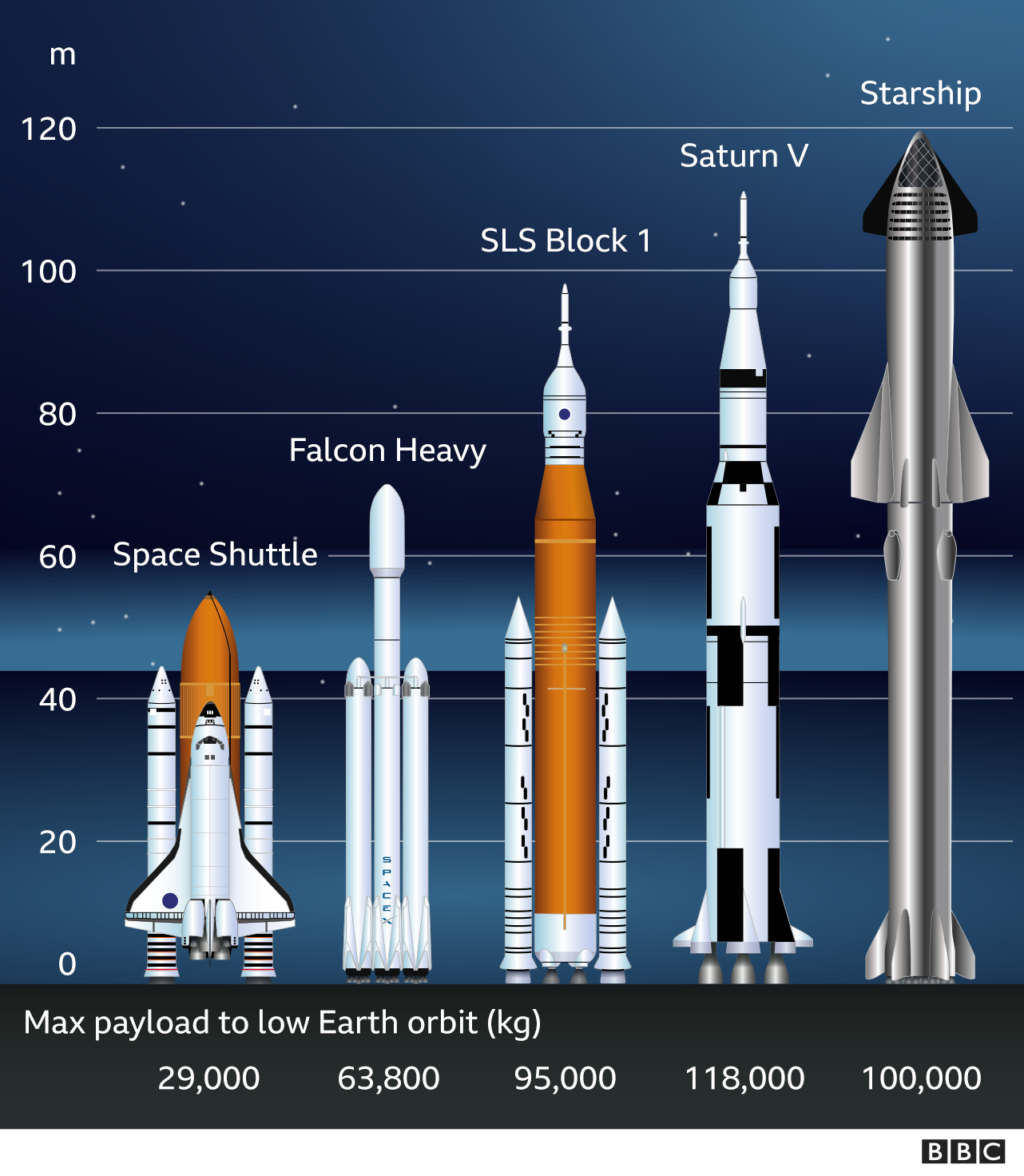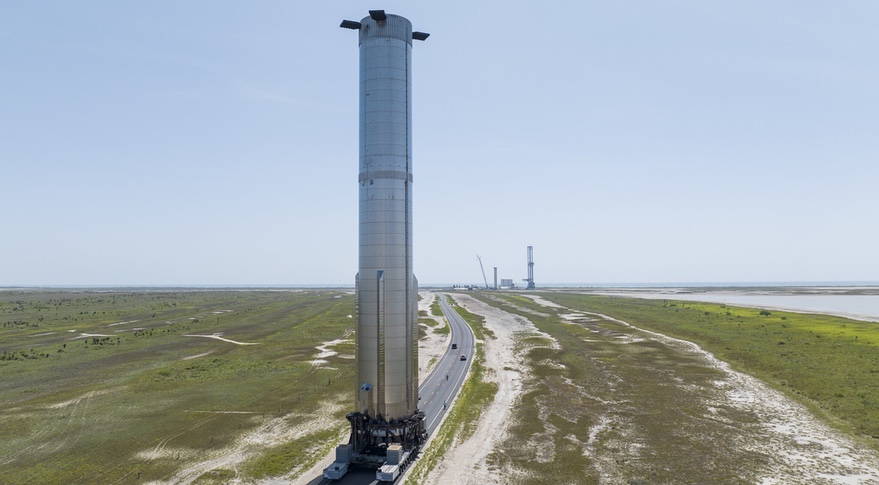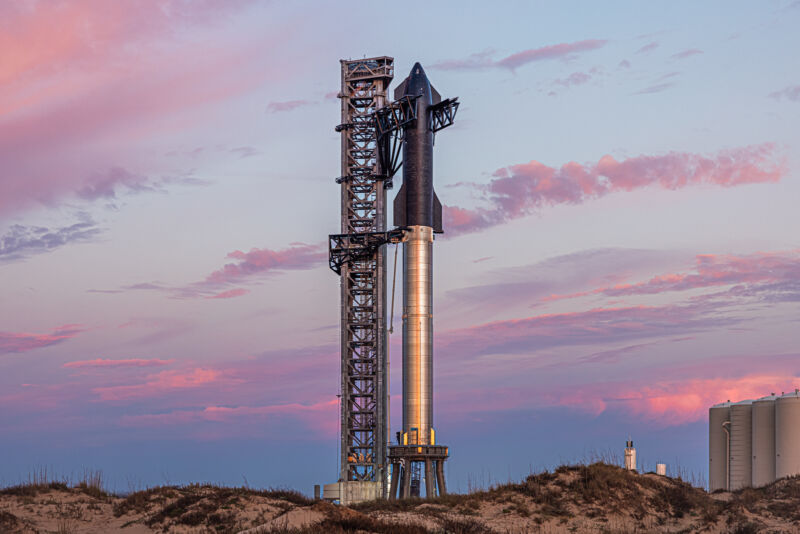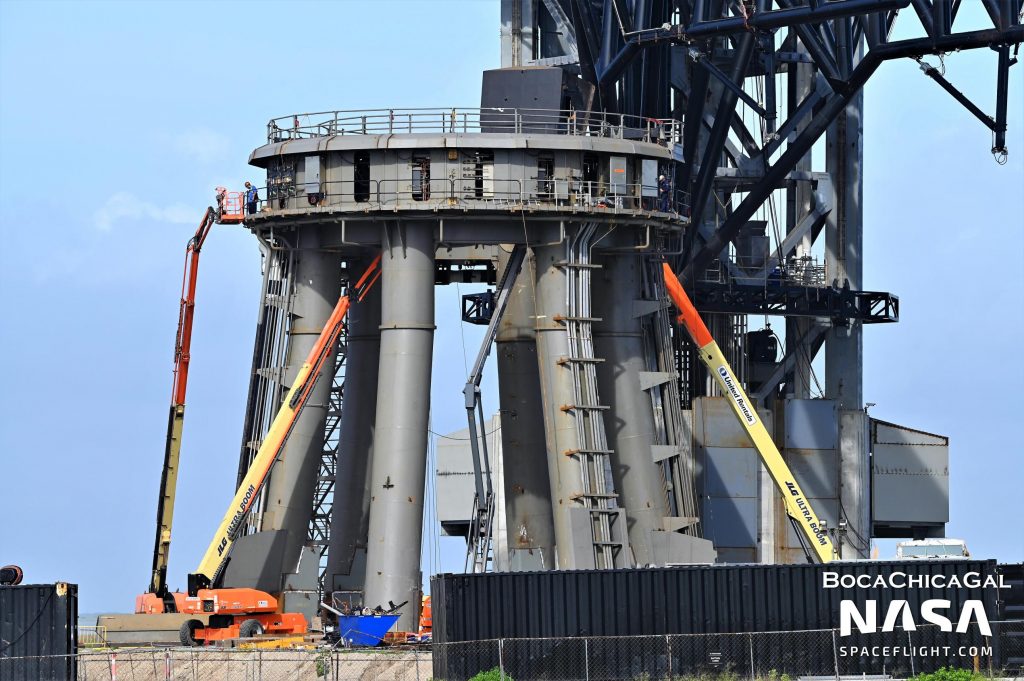
So, Brownsville is very close to Boca Chica, and Boca Chica is where SpaceX is building their STARBASE production facility for the Starship rocket. Now, this is a significant development but there are many facets to it so I thought I’d do a primer which should help in understanding what is going on in the following months.
A brief history of spaceflight
I’ll not go into detail, as there is plenty of reference material out there on the development of rockets after the second world war which led to the space race in the sixties and the development of American and Russian spacecraft, culminating in the Apollo missions which took man to the Moon.
The Apollo missions were based on the Saturn V rocket which was the largest and most powerful rocket ever to reach orbit. However, in the context of our Starship discussion, it is important to realise that for each rocket sent up, nothing was reusable and hardly any of it even returned to earth – only the crew capsule, or command module, finally made if to splash down in the Pacific Ocean many days after its launch atop the behemoth 3-stage Saturn V booster.
A lack of reusability was not important at the time of the cold-war and the space race with the USSR, but obviously made each mission, hugely expensive. Think how expensive fireworks become as they get bigger and more impressive, then imagine how costly it would be to make a firework 363.0 ft (110.6 m) tall, designed to carry three astronauts to the Moon, and back – and NOT explode.
The cost of each Saturn V launch between 1967 to 1973, including the 12 Apollo missions and the launch of Skylab in 1973, 10 of which were manned, 6 of which landed astronauts on the Moon, was $185 million in 1969–1971 dollars ($1.23 billion in 2019 value).
The case for reuse

Each of the Apollo missions was effectively a one-off mission. Elon Musk and his SpaceX company have a stated aim to colonise Mars in the long-term. While a lofty aim, this is clearly a quantum leap from the singular flights to the Moon, which are still the furthest Man has ventured away from our home planet. Colonising anywhere, and surviving, is very different to exploring for a few days. The resources and logistics required to set up a permanent base which is sustainable, are many times greater that that required for a short trip. Compare what you might take for a day trip to your local beach, to emigrating to the other side of the globe, or spending 6 months on secondment to an Antarctic research station. It is, however, difficult to contemplate the infrastructure required when your journey takes you to a virgin territory. The voyage of the Pilgrims on the Mayflower might be a better comparison, but even then, raw materials for building and animals for food would have been available at the destination.
Herein lies the problem, with Mars. If you don’t take it with you, you’re not going to have it when you get there. The infrastructure which needs to be in place to support and sustain a permanent settlement is massive, with current estimates starting at 1 million metric tons. So the goal of any spacefaring civilisation is to reduce the cost of getting that mass into orbit. Reuse of every part of a spacecraft, with the exception of the propellant to power the engines, is thus essential in practical terms to achieve that end. Imagine how expensive it would be to flight across the Atlantic on holiday if the aeroplane was only used once!
Reuse, which has been the holy grail of rockets since the sixties, is only now becoming a reality. In the last few years, the reusable SpaceX Falcon 9 boosters have regularly delivered second stages with satellite payloads to orbit. To date, three of these boosters (B1051, B1058 & B1060) have all been reused a total of 13 times, coming back to land vertically either on drone ships in the ocean, or back at the landing site. A truly impressive spectacle. However, the second stages are not reusable and are always discarded after performing their delivery function.
SpaceX’s Starship, consisting of the Booster and the Starship itself, is designed to be the first fully and rapidly reusable system, capable of lifting over 100 metric tons to low-Earth orbit (LEO).
Mass is everything
Each gram of mass that gets into orbit on the rocket costs fuel to get it there, or in the case of a rocket, what is more rightly referred to as propellant. Now, I’m not going to go into the so called ‘Rocket Equation‘, but suffice it to say that any part of a rocket which is non-critical, is adding dry mass to the system and therefore unnecessarily taking away from the potential payload which the system could deliver to orbit, or reducing the capabilities of the system, for example by reducing the orbit to which a fixed mass could be delivered.

This is the primary problem with reuse of a rocket. If you are throwing it away, niceties like landing legs, extra propellant to slow your descent, parachutes, heat shields, etc., are all unnecessary. For a rapidly reusable rocket, you have to have some way of returning it to ground level without it being destroyed or needing months of refurbishment. Interestingly, the latter point here was always the Achilles heel of the Shuttle. While some of it was reusable (e.g. the orbiter itself and the solid rocket boosters), the turnaround time for inspection, maintenance and refurbishment of key systems, such as the thermal protection system, eventually proved uneconomic.
In order to achieve their goal, SpaceX are rewriting the rule book and with true SpaceX flair are taking a completely lateral approach to solving the problems which arise.
So, having given a bit of background, here are the basics of the Starship system
Starship

While the Starship is the name of the rocket system which powers into the sky, somewhat confusingly the name of the second stage, which sits atop the booster on the ground is also the Starship, although for clarity here, I’ll refer to it as the ship. Constructed of welded stainless steel rings, the ship is 164ft (50m) tall and 30ft (9m) in diameter, consisting two tanks containing the oxidiser and propellant above the ‘Raptor’ engines at the base, with a payload compartment above. Obviously, the payload bay is where satellites will be deployed from in the future, and also in the long-term where crew on manned missions to the Moon and Mars will inhabit. The Starship is designed to be versatile and highly adaptable for different missions.
The Raptor engines, of which 3 sea-level and 3 vacuum optimised variants are fitted to the ship, are designed to function on methane and oxygen, and have been developed by SpaceX themselves over the last few years. The fact that they run on methane (CH4) is key to SpaceX’s Mars colonisation plans, but that is a topic for another post.

Part of the process of reentry from orbit for any craft, is scrubbing off the speed you added in order to get to orbit in the first place. The primary mechanism used to achieve this, without requiring any additional fuel, is aero-braking. This process uses the drag in the atmosphere to slow the craft to the point that parachutes or engines can be used to complete the reduction in speed. After aerobraking, final stage engine braking is the SpaceX tried and tested method of speed reduction, as demonstrated in the Falcon 9 landings (see above) and which they will be also employing during ship and booster landings.
You’ll note that the ship has 4 flaps, 2 forward and 2 aft, which are used for attitude control during the reentry phase of the flight. While scrubbing off that orbital velocity during the reentry and descent phase the ship will change its attitude performing what is referred to as the ‘belly-flop’ manoeuvre, to present a large surface area, thereby reducing velocity faster. The flaps here thus act in much the same way as a skydiver’s arms and legs, with small adjustments resulting in changes to the pitch and roll of the craft.

During reentry the friction with the air that is slowing the craft creates an enormous amount of heat and the ‘windward’ surface of the Ship therefore has to be covered with heat shield tiles (thermal protection system – TPS), much like the shuttle orbiter. However, unlike the shuttle where practically every tile was a unique size and shape, the hexagonal Starship TPS tiles are regular in shape and size, with only a few different variants required to cover irregular surfaces (e.g. flaps) and joints. Tile replacement, when required will be quick and easy.
Super heavy booster

Made of the same stainless steel rings, the Starship super heavy booster is exactly the same 30ft (9m) diameter as the ship, ensuring standardisation of both the ship and booster production through following similar processes. Standing 230ft (70m) tall, the booster does not reach orbit though, but delivers the Starship to an altitude and at a velocity which allows it to complete its journey, without the spent weight of the booster. Having performed its task, the booster will then slow with a boost-back burn and return to ground level, either to the landing site, or to an ocean based platform.

The booster is similar to the ship in that it consists of two tanks for oxidiser and propellant – again liquid oxygen (O2) and methane (CH4), but without the need for a payload bay or crew quarters in the booster, the tanks make up the majority of the volume of the craft, underlining its sole purpose to feed fuel to the engines to propel the craft and the attached ship into orbit.
The booster uses the same raptor engines as the ship, but has 33 of them, arranged in 3 rings of 20 / 10 / 3 configuration, with the outer engines ‘fixed’ and the inner engines able to ‘gimbal’ to provide thrust vectoring of the booster, in other words, directional control during ascent and descent.
Although the raptors are significantly smaller than the five F1 engines on the Saturn V, collectively they will provide the Starship booster with over twice the thrust of the Apollo first stage.

Similar to the Falcon 9 booster, the Starship booster will be fitted with electrically operated grid fins to provide additional directional control during the atmospheric descent phase of the mission profile. At this point, the booster has 4 grid fins fitted, but Elon Musk has suggested this will be reduced to at least three, possibly two, in the future, further reducing the dry mass of the booster, and increasing the performance capabilities / payload capacity of the overall system.
Stage Zero
One thing notably absent from both the Starship and the Super Heavy Booster is landing legs. Prominent in the Falcon 9 and even present in the early Starship prototypes, the current design of both Starship and Boosters do not include legs or feet of any kind. So how is a successful landing going to be achieved?

This all comes back to dry mass – the weight of the ship and booster at ground level, when unfuelled.
Elon Musk has a mantra that he works to – the best part is no part – and while a strategy for landing without a rapid unscheduled disassembly (RUD) is key to a successful reuse program, the components for achieving a landing do not actually have to be part of the spacecraft. So, if the Starship is the second stage of the system, and the booster is the first stage, there is much complexity to the system which SpaceX are building into the launch system – enter stage zero.

Stage Zero consists of the Orbital Launch Mount (OLM) and the Orbital Launch Integration Tower (OLIT).
The OLM performs a number of critical functions, including physically supporting the base of the booster and thus holding it away from the ground when the 33 engines ignite, while at the same time providing ground services to the booster such as propellant loading and electrical prior to launch. A water deluge system, to provide noise suppression is also included in the OLM.

While the OLIT looks like a ‘normal’ launch tower, it has been designed to perform many key tasks. About half way up is a small utility arm, called the Quick Disconnect (QD) which provides provides propellant loading and other ground services to the Starship when it is mounted atop the booster. First and foremost though, the larger arms sticking out from the tower known as the ‘chopsticks’ are custom crane arms which move up and down the side of the tower, and which can separate and clamp to support either side of the Starship or the booster to lift them into position.
However, that’s not the half of it.
A lack of legs and feet on the ship and booster will require some intervention prior to ground contact, and here is where SpaceX are thinking laterally. In addition to lifting, the chopsticks are also designed to catch the returning craft.
Let’s just allow that to sink in for a moment.
The ship and booster have dry masses of around 100 tons and 160 tons respectively, and when they descend to the launch site, they will need to reduce their velocity to zero, hover with pinpoint accuracy above ground while the chopsticks close about hard points on their tubular bodies, and finally when supported, the raptor engines will be cut. If SpaceX pull this off, it will be a sight to behold!
Hopefully, this has given you an idea of what SpaceX and Elon Musk are aiming to achieve and with testing on all these systems being carried out as this post is published, it is certainly a great time to be in this part of the world.

Just plain AWESOME ML. X XXXX